Extract from the upcoming book The Body and Leadership.
………………
“To everything there is a season…a time to be born and a time to die, a time to plant and a time to reap that which has been planted”
Ecclesiastes 3:2, The Bible
Life is not just movement but rhythm. In the modern world a sense of natural rhythm has been largely lost as we switch on artificial lights to change night into day,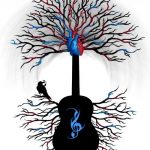 override the urge for rest or to wake with stimulants and depressants, and fail to acknowledge the natural human cycles which makes leaders healthy, happy and sustainably productive. The fact remains however that the bodymind has its cycles and we would be wise to accommodate them. These cycles can be short or long-term and operate in everything we do, from taking a sip of water to relationships, to work projects to the course of our life. Cycles exist within cycles making them “fractal” – like the pretty swirl images where the same seemingly chaotic pattern exists on deeper and deeper levels. A large part of a leader’s effectiveness is there ability to be aware of and surf these ebbs and flows. Leadership is not forcing rhythms along or pretending they don’t exist but awareness of what “wants” to happen. An effective leader reads the turning of the tides quickly and blends harmoniously with them, perhaps adding to what is happening anyway but never resisting or forcing. In an ever changing world this is the essence of change “management”, which is more like change sensing, adaptation and dancing. Leadership is the art of change and is in fact a following discipline.
override the urge for rest or to wake with stimulants and depressants, and fail to acknowledge the natural human cycles which makes leaders healthy, happy and sustainably productive. The fact remains however that the bodymind has its cycles and we would be wise to accommodate them. These cycles can be short or long-term and operate in everything we do, from taking a sip of water to relationships, to work projects to the course of our life. Cycles exist within cycles making them “fractal” – like the pretty swirl images where the same seemingly chaotic pattern exists on deeper and deeper levels. A large part of a leader’s effectiveness is there ability to be aware of and surf these ebbs and flows. Leadership is not forcing rhythms along or pretending they don’t exist but awareness of what “wants” to happen. An effective leader reads the turning of the tides quickly and blends harmoniously with them, perhaps adding to what is happening anyway but never resisting or forcing. In an ever changing world this is the essence of change “management”, which is more like change sensing, adaptation and dancing. Leadership is the art of change and is in fact a following discipline.
A Kiss, Your Body, a Project
Lest we become abstractly philosophical remember the last kiss you had – this is a good micro-example to illustrate. If we think of a kiss simply as a linear action we lose the essence of it. When one goes in for a kiss there is a listening, an entry to negotiate, a moment to seize, a time to sustain the kiss for, a way to develop and play with it, a rising of excitement, a peak, a winding-down, an exit to negotiate, a completion and a withdrawal and rest before whatever comes next! All this in one kiss and within any part of the kiss the same processes apply on a smaller level! These complex time and relational aspects may happen in under a second and the more we get used to kissing someone the easier and less obvious they may become.
We are all already masters of rhythms and relationships negotiating cycles like the one described in the kiss many times a day. Internally our bodies are massively complex sets of interrelated rhythms. Our breathing, heart-beat, sleep, nerve impulses, hormonal changes, in fact every imaginable bodily system dances to its beat and melody. The “big body” of the universe moves in similar rhythms, the movement of everything from atoms to season to planets is not just flowing but pulsing. Everything is waxing and waning – the universe is tidal. George Leonard describes this eloquently in his book The Silent Pulse:
“At the heart of each of us, whatever our imperfections, there exists a silent pulse of perfect rhythm, a complex of wave forms and resonances, which is absolutely individual and unique, and yet which connects us to everything in the universe.”
Life looks like a set of things but linguistically nouns are always at best simplifications and at worst mistakes. We are not static and at any moment in time a chair treeing is more treeing than “a tree”, I am more Marking than Mark and even what looks static like a rock is in fact in very slow process (as any geologisting will describe).
Some Models of Rhythms
As with type there are many ways to divide up the complexity of reality with maps that simplify for clarity and ease of use. Any rhythmical map is explained in terms of a sequence of stages but they are best seen as a cyclical flow – Spring gradually becomes Summer and doesn’t suddenly end on June 1st.
Yin and Yang
The interplay of yin and yang is perhaps the most fundamental cycle and the swing between the two the basis of all other rhythms. Here it is vital to view yin and yang as polarities and not opposites. The expression and completion of one naturally leads to the emergence of the other. Where leaders become out of balance is where they become addicted or habitually tied to one and try to unnaturally cling on and extend it, inevitably to their detriment. As mentioned in chapter three yin and yang is also our recharge cycle and given that one of the leading management thinkers of our age has described a leader’s primary job as “managing their energy” this is no small thing. In any conversation it is the flow between expression and listening that is important and in any work project between gathering marketing data and resources and execution that matters – not just one polarity or another. To paraphrase an old martial arts text and several masters – consider yin and yang deeply – though thought, action, feeling and relationship.
Story – Beginning, Middle and End and The Six Questions in Cycle
All cyclical models involve “when” – we exist and beings in time – and none more purely than the classic model of stories, trainings and speeches that states they must all have a beginning, middle and end. We are story telling animals and demand this structure throughout life. The characters are introduced, something happens – nearly alwayschange, often conflict – then there is a resolution. This model is so embedded that it is present in almost every imaginable aspect of life and a book without an introduction, abusiness plan without development or a meeting without a goodbye would seem very strange for example. Note also that any story answers the questions introduced in fundamentals. The story hasto have content (what happens?), place (where?), characters (who?) and meaning (why?) to be satisfying. The style of the story is the “how” in the same way as the style of our movement is how we are as people and leaders.
Gabriel Roth’s Five Rhythms – A “How” Cycle
While we may impose the narrative cycle on reality because we as story-telling meaning-making humans that are predisposed to it, as mentioned nature has her own abundance of cycles. On model and embodied practice that focuses on the how of any natural cycle is Gabriel Roth’s Five Rhythms. These five rhythms are flowing, staccato, chaos, lyrical, stillness and are described below by my friend and a senior British Five Rhythms teacher Adam Barley:
Cultural and Organisational Models
Note that while we have been describing rhythms in terms of Wilber’s top two quadrants of body and mind, they also apply to groups, cultures and systems that individual leaders are involved with. Bruce Tuckman’s team development model of “forming, storming, norming and performing” (and later sojourning) is a well-known if clunky classic. There are also models of organisational growth and decline such as Greiner’s “life cycle” model of growth, maturity, decline and death (sound familiar?), which I won’t go into here but are worth knowing about if you work in a company, charity or similar organisation. Other structures such as families and sports clubs can go though similar stages.
The Seasons – Our Basic Template 
Perhaps the easiest cycle to use because most Western people are so familiar with it is that of the seasons. The seasons contain all the basic elements that we will get into in more depth with the I, we, it cycle which follow. It may be enough for many leaders to simply ask “what season am I in, personally in life and in my job, with this person I’m talking with or with this project”. The table below shows some of the features of the seasons. Note that as with yin and yang one “births” the next and this is a cycle not a straight line.
One consideration is that we have cultural bias towards the youth and activity of Spring and Summer. In business for example this shows up as people having little time for rest, reflection and satisfying endings, and leads to burnout personally and lost learning organisationally amongst a host of other problems. In popular culture this translates as airbrushing, infantilising, fads, rushing, a lack of respect for wisdom and a general lack of depth. Note that Winter is not just the time of ending but rest and preparation for Spring. Winter is not dead but fully alive in a less obvious way.
NB: There are of courses places which have a different climate and not these seasons, you may for example divide the year up into a rainy and dry season. If you come from one of these locations you may wish to use another model. Whatever works as ever.
Habitual Personal Preferences
Some people are great at hellos and others goodbyes, some the other way around. Our natural preferences and habits within life’s leadership rhythms are easy to see. What do we artificially try and prolong and what do we rush over as quickly as possible. Neither is really possible of course and it will have a negative effect on our own health and happiness, relationships and productivity to try to!
I, We, It – The Core Cycles
Now for a more in-depth look at rhythms. The seasons is a good general model and may be enough for many people, if you are interested in this area however it is worth understanding cycles from a first, second and third person perspective. This brings us back to the familiar – I, we, it framework and produces three fundamental or core cycles:
Activation-increasing-p eaking-conta inin g-decreasing-completing-rest
Simplified versions: Wake, awake, sleepy, sleep / turning on, on, turning off, off
The Subjective cycle describes the level of pure internal arousal and activation level (one meaning of “energy”) which may also be described as the personal potential for action and relationship if relating it to the other cycles. It is important to know this rhythm from the inside out as that is its essence.
The cycle begins with interest and activation – if we return to the example of the kiss the start may be the flash of excitement that precedes the kiss itself initiated by the mere thought of a kiss. This excitement builds (and while I am using this as an example it is often not sexual I should point out!) and eventually peaks reaching a maximum fever-pitch. Hopefully by this point you are in a passionate embrace but it is the internal aspects we are currently concerned with. From now the energy is contained and then decreases. With a kiss this may take half a second or some hours depending upon how long you have been together for 🙂 Eventually the passion of the kiss must complete and there is a period of stillness and rest that follows even the most passionate embrace! Note this cycle is just a more detailed version of the four seasons and can also be seen as simply waking up and going to sleep or turning on and off.
Some I-Flow Traps and Applications
As with any cycle the main problems a person can have are an inability to enter into or let go of any stage. Let us for example imagine a leader who has trouble getting excited by new ideas, this could be a problem and may keep them stuck in the past and destroy relationships with more enthusiastic colleagues for example. Equally someone who wasn’t able to contain their excitement for “the latest thing” or manage anxiety and stimulation at all could have issues even with the best centring skills. I have also met many leaders in business who rushed from decreasing to activating another cycle without allowing adequate time for completing and stillness with consequences for their stress and wellbeing as previously mentioned. As with all the areas in this book people are screwed up in some wonderfully diverse ways so this short list is not exhaustive. Areas of relevance to this cycle other than romance and stress include attention and time management (our primary currencies), use of stimulants and depressants and the creative process.
This cycle is based on Dr Richard Strozzi-Heckler’s “Rhythm of Action/Excitement”
The Relationship Cycle – We Flow
Aloneness-meeting-connecting-dialogue-transformation-completing-departing
Simplified version: Hello, chat, goodbye
Of course we do not just have our own internal cycles but are rhythmical in relationship. It is vital for any leader to be able to manage the rhythm of interaction and connection with others. This is the art of tact – saying and doing the right thing at the right time with others. Not just a matter of social graces and manners it is the very essence of good working and intimate relationships. A kiss at the wrong time (in relation) might as well be a punch. This cycle by its nature needs to be explored with others.
Importantly the relationship cycle begins with aloneness and people who are unable to tolerate being by themselves may rush from one foolish codependent relationship to another. Many modern societies confuse being alone with loneliness so it is endemic that this cycle starts badly unfortunately. From aloneness we may then meet others and we all know people who are terminally shy or addicted to this part of friendships, always needing to meet new people rather than deepening into connection. Truly connecting with others allows us to dialogue. This involves the yang of authentic expression and the yin of really listening. True dialogue is not just conversation but mutual transformation. Real relationship is often both exciting and scary (especially for I and it types) because it always involves change and both loss and growth. After connection and conversation comes the art of finding a way to complete the relationship together and depart elegantly. We have culturally specific social rituals around all aspects of this cycle and I have yet to find a language that does not have words for hello and goodbye (the most basic frame of this cycle) and a way of asking “how are you?” – the middle part.
Some We-Flow Traps and Applications
Leadership is in many ways just the art of self-management (I), relationship (we) and getting things done. I sat “just” of course with a smile on my face. While these areas are all essential where I see most leaders failing is in the relational aspect, so the-flow cycle is worth paying particular attention to.
The pitfalls of aloneness and meeting snags have already been mentioned and people can also get stuck in a pathological need to connect connect connect without really entering into the dialogue itself (I have seen this in many New Age and “touchy-feely” groups) or find coming out of dialogue, completing in a mutually satisfying way and parting hard. Some find it hard to say goodbye and stay in jobs and relationships long after they have ceased being healthy, while others leave too quickly before the real relationship has began.
The art of connection and relationship applies on many time-scales from meeting and shaking hands with a new colleague to long-term friendships, mentoring or intimacy. Much of the art as ever is in the tasting and one doesn’t plan how long a hug lasts or how to relate to be at an old friend’s funeral. Feeling one’s own body (rather than just being “lost in the other”) to know what is too much or too little while interacting is the secret.
The Action Cycle – It Flows
Preparing-starting-doing-completing-reflecting-not doing
Simplified version: Prepare, do, don’t
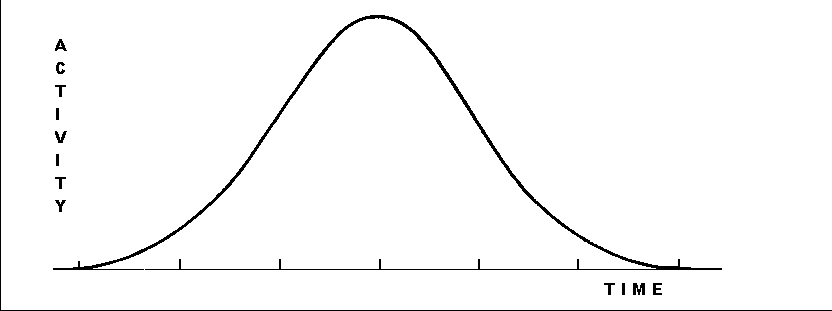

It is also worth any leader considering the cycle of getting things done! This is built upon a leaders cycles of self-management and working with others and its essence is action and the task at hand. This cycle is best explored by doing things.
Before we start any activity it is wise to do some preparation so we have “all the ducks in a row”. Starting itself is then of course vital, as Goethe said “What you can do, or dream you can do, begin it; boldness has genius, power and magic in it.” or as my ex boss said “get on with it”. Of course there is the action itself and then the wrapping up of that action – completion as per the other cycles. After the action itself it is wise to spend some time evaluating and learning from what was done, in fact this cycle could also be framed as a “learning cycle” in the style of others such as Kolb’s that exist. Lastly there is a period of productive and necessary inactivity.
The first potential traps are jumping into things without adequate preparation or planning so long it becomes a form of procrastination! Leaders must be able to start when it is time to start and not before or after – this is the “timing” cycle as it is most usually understood. Doing can become additive for many in the modern age however and I have worked with many businesses who don’t know who to complete projects and have friends who juggle so many balls they inevitably drop some. If reflection is missing one doesn’t learn from ones mistakes (and victories), and inactivity is the womb from which future action is born so this is not be ignored by rushing into the next thing. Both are common mistakes in this fast-paced world though analysing something to death and wanting excessive time between tasks also come up. Again, this list is not exhaustive.
This cycle is obviously relevant to work and whatever job you do you will need to flow through its stages.
Combined Cycles
It is possible to combine these cycles, and one I particularly like in this vein is Stuart Heller’s “add on, keep and let go” I-It cycle which addresses how we as individuals relate to actions.
Other Models
A wealth of other cyclical models exist from ancient Mayan wisdom to modern Gestalt psychology. They often describe the basic seasonal and I,we,it models I have laid-out here but explore and have fun.
Longer Term Cycles
Life Stages
The psychologist Erik Erikson proposed a life stages theory which was an early developmental model. While simplistic and ageist from a modern integral development perspective (see “stages” in chapter 1.) it does however serve as an example of how we live our lives in a larger rhythm than years – see below. Having been in close contact with thousands of bodies of all ages across many cultures through aikido I have come to a different understanding of the life-cycle than is common. Outside of communities such as martial arts and meditation it is socially acceptable, in fact expected, that age brings a decline in both health and energy. It is my observation however that with regular embodied and spiritual practice the vast majority of the ravages of what we think of as ageing can be avoided. What is left is a graceful decrease in speed and increase in care – this is our real ageing cycle, along with a shift in certain concerns which are also embodied. Interestingly in healthy “old-age” many of the positive features of early childhood such as humour, intuition and curiosity remerge.
Hero’s journey
The Hero’s journey is a wonderful model of the cycle of stories with more complexity than “beginning, middle and end”. It is an archetypal structure with deep intuitive and emotional appeal and people often unconsciously structure experience through it. You will see aspects of it in many great myths and modern movies, from Gilgamesh and Beowulf to The Matrix and Star Wars. I have loosely structured the narrative autobiographical aspect of this book around it. Rather than explain this cycle in detail I offer the diagram below as a tease – read the narrative extracts or watch a modern epic like Lord of The Rings with them in mind and the elements will soon make sense.
Building Cyclic Capacity
So if a leader needs to be able to flow through these cycles with grace to be happy and effective, what do you do if you find you repeatedly hit a barrier entering or clinging to a stage? I have yet to meet someone who does not at least have preferences and in the vast majority of people I work with these preferences are strong enough influencers to cause them problems. So what to do?
Let’s look at some possibilities. One could design a practice of waiting one minute with your food in front of you before a meal before you start to build containment, spend time alone each day or being intimate with others, or take some yang chest breaths to encourage starting new work day. These are examples from our three core cycles. Simply paying attention to your actions as in previous exercises will go a long way to balancing out your cycle. Let’s say you start noticing that you rush when you drive or leave conversations abruptly, with increasing awareness you will be inclined to “stretch” parts of the cycles you shorten and move on faster from areas you get stuck to. Like any practice you will find this a little uncomfortable at first, so stay in your zone of growth and centre (relaxing or stimulating as appropriate) when needed. It is this ability to manage the learning zone by staying with and tolerating what is uncomfortable without letting it become unbearable that will determine your success with many of the practices in this book. As always listen to your body which will let you know what is too much and what is too little.
Cycles and Types
The strengths and challenges we have with parts of a cycle are often related to our type. Fire types may well accelerate too quickly and earth types not quickly enough for example, so identifying and balancing your type helps.

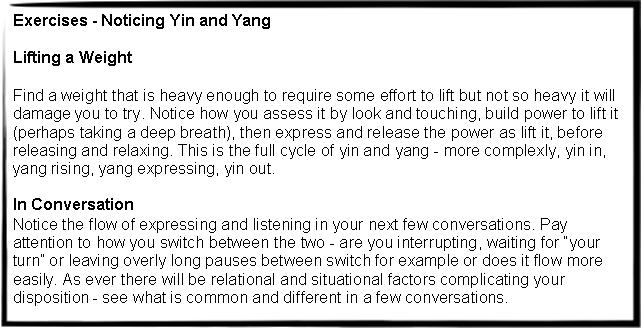

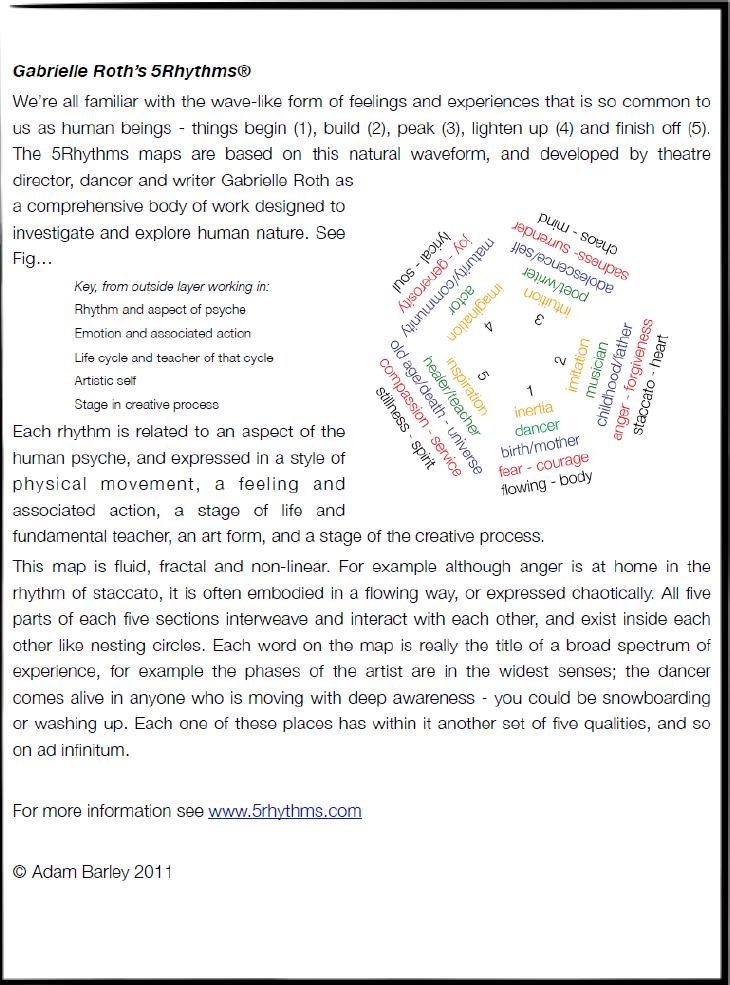


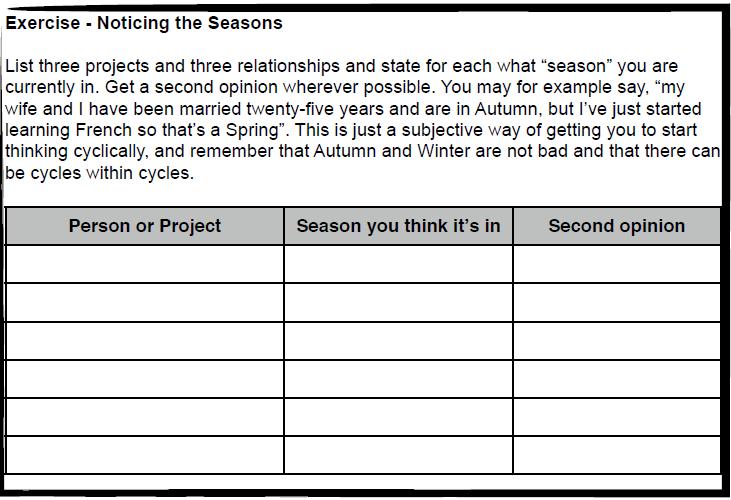
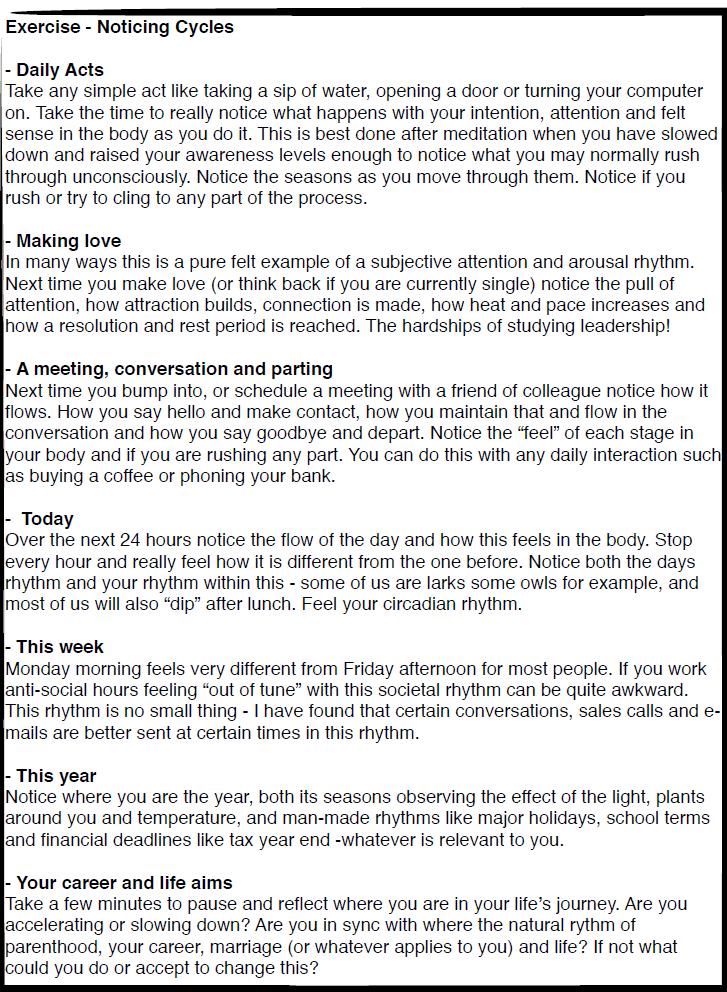

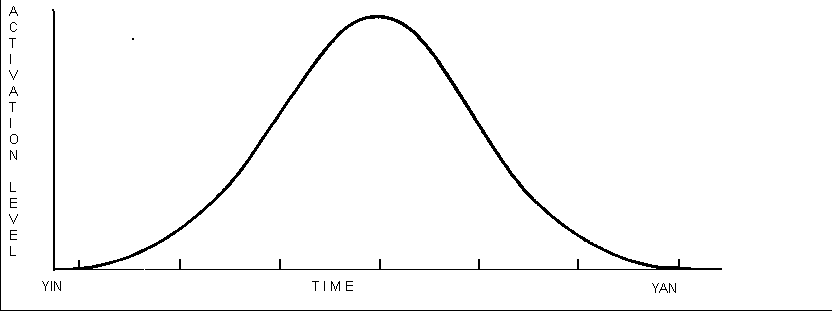

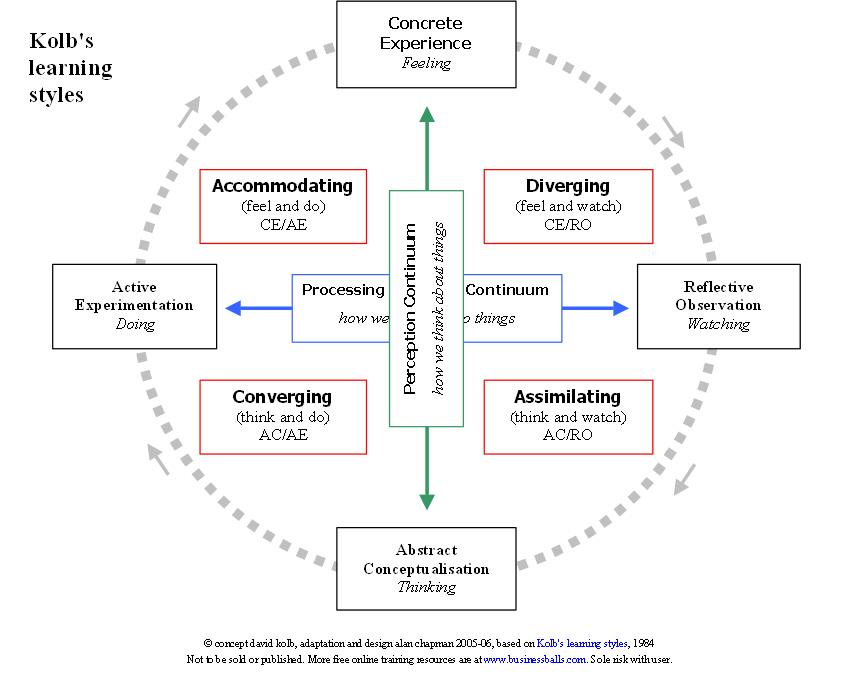


Discussion